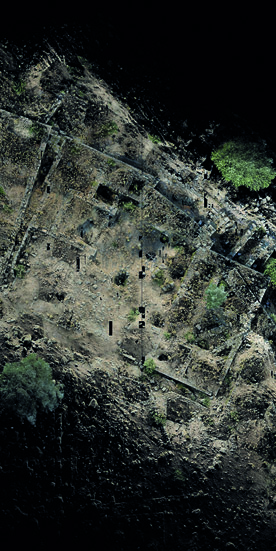The Late Classical Palace at Larisa

The New Palace at Larisa (today: Buruncuk Village, West Turkey) is located on top of the steeply sloping north-western edge of the acropolis plateau. It formerly occupied almost one fifth of the Late Archaic Acropolis. The palace held a widely visible position overlooking the Hermos plain and an ancient main road, which once connected central Anatolia with the Aegean world.
The well-preserved complex, which is one of the few remaining examples of palace complexes in the Aeolis, allows for systematic investigations into Late Classical palace architecture. The large ensemble was first excavated in 1902. Further excavations were conducted in 1932, 1933, and 1934. The findings were published in 1940 in a significant, but soon outdated, publication. The aim of this dissertation is to study the architectural remains of the palace and to classify them according to urban and typological features based on comparative examples and with reference to new surveys conducted by Istanbul Technical University since 2010.
Beyond the analysis of the specific building, the dissertation will present models for the Late Classical Palace typology that can be found in the older structures in Larisa and within the region. Taking into account the political, cultural, and settlement-historical conditions, it will discuss the causes of the increased construction activity at Larisa in the Late Classical period. The study will thus contribute to the knowledge of the development of palace complexes of the Classical period in the Aeolis and its neighbouring regions.
This project collaborates with İstanbul Teknik Üniversitesi.
Researcher: Duygu Göçmen
